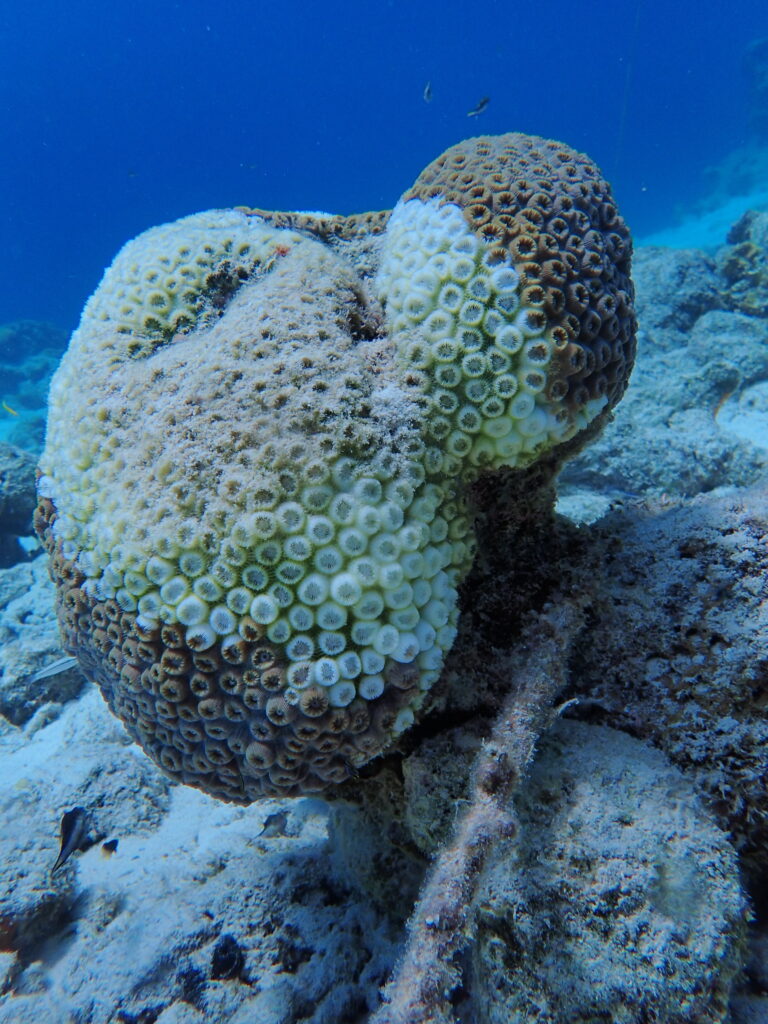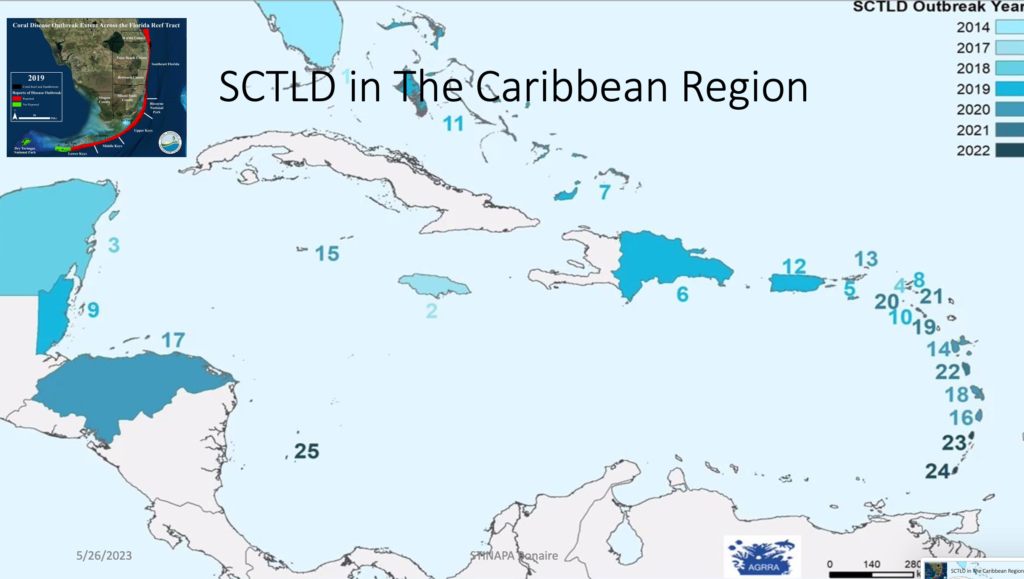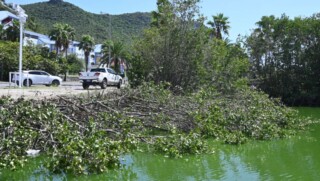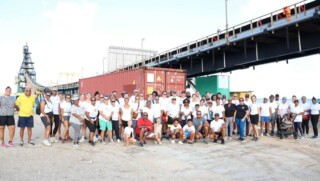STINAPA: “We have started using antibiotics against the coral disease SCTLD”
KRALENDIJK – The underwater world of Bonaire is being affected by the coral disease SCTLD, causing large sections of hard coral to die off. STINAPA began using antibiotics against SCTLD last week. According to the health organization, current research indicates this is necessary and safe. STINAPA sees this treatment as a light at the end of a dark tunnel.
Bonaire is known among underwater enthusiasts for its beautiful sections of hard and blooming soft coral teeming with fish. However, since March 2023, a change occurred. The coral disease, Stony Coral Tissue Loss Disease (SCTLD), turned sections of hard coral into white wastelands, causing devastation. Nature lovers were at a loss, fearing the end of Bonaire’s underwater world.
SCTLD and Coral Bleaching
The SCTLD disease grows an average of three centimeters per day and can sometimes grow up to 40 centimeters in a day. SCTLD is found throughout the Caribbean Sea. Researchers still struggle to diagnose the disease. With rising sea temperatures, another problem arises: coral bleaching, leading to even more white coral sections.
Unlike coral bleaching, SCTLD kills coral. There’s still a chance for coral to recover from bleaching if sea temperatures lower, which fortunately has been happening in Bonaire recently.

SCTLD has also been spotted on the east coast of Bonaire.
Cruise Ships Not the Cause
SCTLD was first noticed near Bonaire’s port. In April 2023, the northern part of Bonaire was closed to divers. Critics immediately blamed cruise ships, but according to Roxanne-Liana Francisca of STINAPA, this is an oversimplification. She points out that the disease started in Miami and argues that if cruise ships were to blame, the Bahamas would have been the second place for the disease to develop, which wasn’t the case. It’s difficult to determine how SCTLD reached Bonaire’s waters.
Biologist Francisca of STINAPA suggests that it’s not necessarily true that SCTLD came to Bonaire via cruise ships.
Bonaire Follows Curaçao
Efforts are ongoing to combat the disease. While other countries in the Caribbean haven’t found a solution, Bonaire technically started the antibiotic process earlier. However, Curaçao began applying an antibiotic called Amoxcilin to the corals before Bonaire did. This antibiotic is hoped to destroy the bacteria on affected coral. Each affected piece needs to be coated multiple times, a labor-intensive process with uncertain long-term effects.

Francisca thinks the reefs will permanently change.
Safe Antibiotics
However, coating coral with antibiotics has its drawbacks. The impact of introducing antibiotics into open waters on nature, animals, and humans is still uncertain. According to Francisca, the risks to humans are considered very low, and she believes it’s the only way to save the reefs, preferring to start treatment sooner rather than later.
Future
By treating the corals, STINAPA hopes to mitigate the spread of SCTLD. The disease has been found along the entire west coast, Klein Bonaire, and even on the east coast. Francisca is particularly concerned about its presence on the east coast, suggesting that snorkelers, swimmers, and divers may play a role in spreading the disease, although she doesn’t blame them. She believes ocean currents and fish movements might also contribute to the spread. However, she remains optimistic about the uniqueness and beauty of Bonaire’s reefs, even though she expects them to change permanently.
To combat the disease, STINAPA plans to treat the entire west coast, starting at Washington Slagbaai Park and then working through all dive sites. The organization is seeking volunteers, especially experienced divers, to help fight the disease.
Sign up here if you want to become a volunteer for STINAPA.











